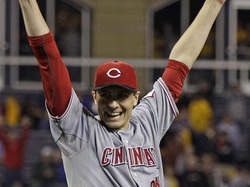So, there were two Dutch Leonard's; both of whom were relevant in MLB history. Hubert Benjamin Leonard was born in the year of 1892 and made his MLB debut in 1913 for the Red Sox- a year after they won their second World Series title. He would pitch efficiently in his rookie season, but in 1914 would put up one of the most impressive seasons in the history of the game for a starting pitcher. Pitching in 36 games, making 25 starts, Leonard would go 19-5, 0.96 with a WHIP of 0.886. It is understood that this was the dead ball era, but his numbers were amazing regardless. In 224+ innings, Leonard gave up just 139 hits (5.9/ 9 IP) and he also led the AL in Ks/ 9 IP (7.1). Though advanced stats were not available back then, his FIP was 1.95 and ERA+ was an astounding 282 for the season.
However, in spite of his success, Leonard was known as a little bit of a malcontent. He was constantly bickering over his salary. First, his salary disputes with the Red Sox during and after the 1918 season led to his being traded to the Yankees. When he couldn't agree to a contract with New York, he was dealt to Detroit. His continuous back and forth with Tigers manager Ty Cobb led Leonard to leave his Tigers team and play in a semi-pro outlaw type league. According to people familiar with the situation, Leonard was very bitter and may have tried to enact his revenge by fabricating the story of the game fixing going on between Cobb and Cleveland Indians manager Tris Speaker. Leonard was the key witness and it was his accusations that were brought to the attention of AL President Ban Johnson. The fact that he refused to report to speak with Commissioner Kenesaw Mountain Landis put much scrutiny in his claims and would later lead to the dismissal of Johnson as AL President. Leonard last pitched in the majors in 1925.
Eight years later, the Brooklyn Dodgers called up a RHP by the name of Emil John Leonard. Also known as Dutch, he was born on 3/25/1909 so he was 24 years old when he made his MLB debut. The lesser discussed Dutch Leonard was the more accomplished and was one of the least talked about successful knuckle ball pitchers in the history of MLB. He started his career as a conventional pitcher; and from 1933-1936 pitched for the Dodgers, both as a starter and a reliever. An arm injury cost him to rely on the knuckle ball during the 1936 season and resulted in Leonard needing to refine his repertoire in the minor leagues and the Southern Association (Atlanta Crackers).
He would return after he was taken in the Rule 5 draft by the Washington Senators prior to the 1938 season. After a respectable first season as a full time knuckle ball pitcher (12-15, 3.43, 33 games, 31 starts), Leonard won 20 games for the Senators in 1939. Leonard happened to start the first game of a doubleheader against the Yankees on July 4, 1939. After the conclusion of the first game, which Leonard won in a complete game victory, Lou Gehrig gave his famous "I consider myself the luckiest man on the face of the Earth," speech. Despite pitching for sub par to bad Senators teams for 9 seasons, Leonard managed to have a 18 and 17 win season as well as appear in 4 All Star Games. He started the 1943 AS game for the American League, getting the win after pitching 3 innings, yielding just one run. After two well pitched seasons with the Philadelphia Phillies- one in which he managed to lose 17 games on a terrible team while pitching to a 2.51 ERA. He finished off his career pitching for the Chicago Cubs his last five seasons.
Looking at a baseball history a "Dutch" Leonard pitched from the years of 1913-1953. Of course, it was two separate pitchers. However, the one that gets the less attention is the one that was probably the more successful pitcher. No question that the first Dutch Leonard had the most talent and played on the better teams during his prime with the Red Sox. But he was his own worst enemy and wound up ruining his own career. The latter was a five time All Star (1951 with Cubs) and pitched 20 years in the big leagues.






 RSS Feed
RSS Feed
